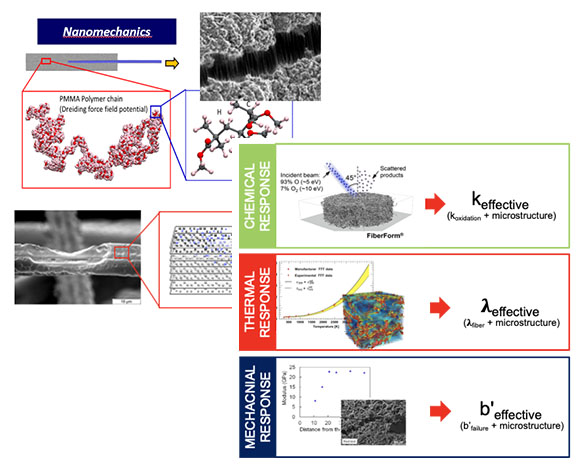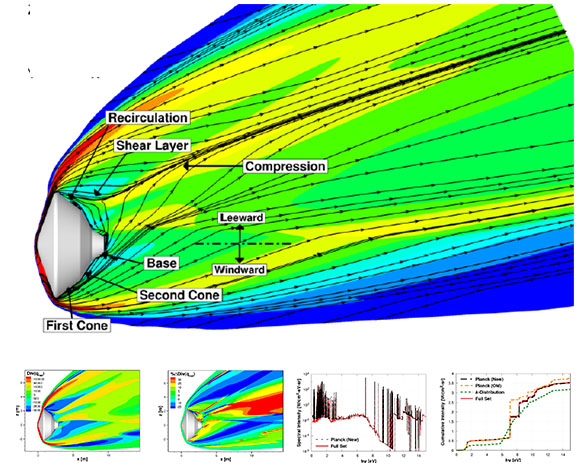Technology
Modeling and Simulation of Hypersonic Entry Systems
NTH can model entry flow environment across all the Mach numbers ranging from M=5 to M=40.
The modeling capabilities include:
- the description of the flow physics with chemical reactions and thermal non-equilibrium effects;
- The ability to model the radiation signature from the hot gases and the response of the thermal protection system. Both radiation and material response simulations can be computed in a tightly coupled or decoupled manner.
- Modeling of turbulence leveraging both RANS or LES models.


Modeling and Simulation of high-temperature across all scales.
NTH can construct thermo-mechanical models for high-temperature materials. This includes both ablators and non-ablators, of different porosity.
The modeling capabilities include:
- Modeling the material response of the thermal protection system across all the scales: From atomistic to vehicle scale.
- Atomistic based models (e.g., Molecular Dynamics).
- Meso-scale modeling of thermophysical and mechanical effects.
- Construction of macroscopic model to be used in the material response codes.
Modeling and Simulation of Thermal Protection Systems
NTH can model thermo-mechanical response of the Thermal Protection System.
The modeling capabilities include:
- Conjugate heat transfer
- Material response modeling of porous media including conduction, convection, diffusion of the pyrolysis gases.
- Porous and Non-porous materials (e.g., ceramics).
- The model can be coupled and integrated to the multi-physics solver.


Radiation modeling including spectral modeling and radiation heat-transfer.
NTH can model the flow and the radiation signature and transfer radiation modeling.
The modeling capabilities include:
- Direct solution of the Radiation Transfer Equation. Use of Sn method for the angular integration.
- Ab-initio based modeling of spectral properties for molecular and atomic systems of interest to hypersonics.
- Ability to construct models for the spectral properties of the plasma.
- Ability to use simplified models like PN to enhance the computational efficiency.
Modeling and Simulation of Plasma-Discharges
NTH can model the flow and the radiation signature in plasma driven wind tunnels.
The modeling capabilities include:
- Modeling of the electromagnetic discharge, including fields and plasma coupling for arc-jets and inductively plasma discharges;
- arc-attachment modeling and plasma material interaction.
- Radiation and material response
- Non-equilibrium kinetics and radiation

